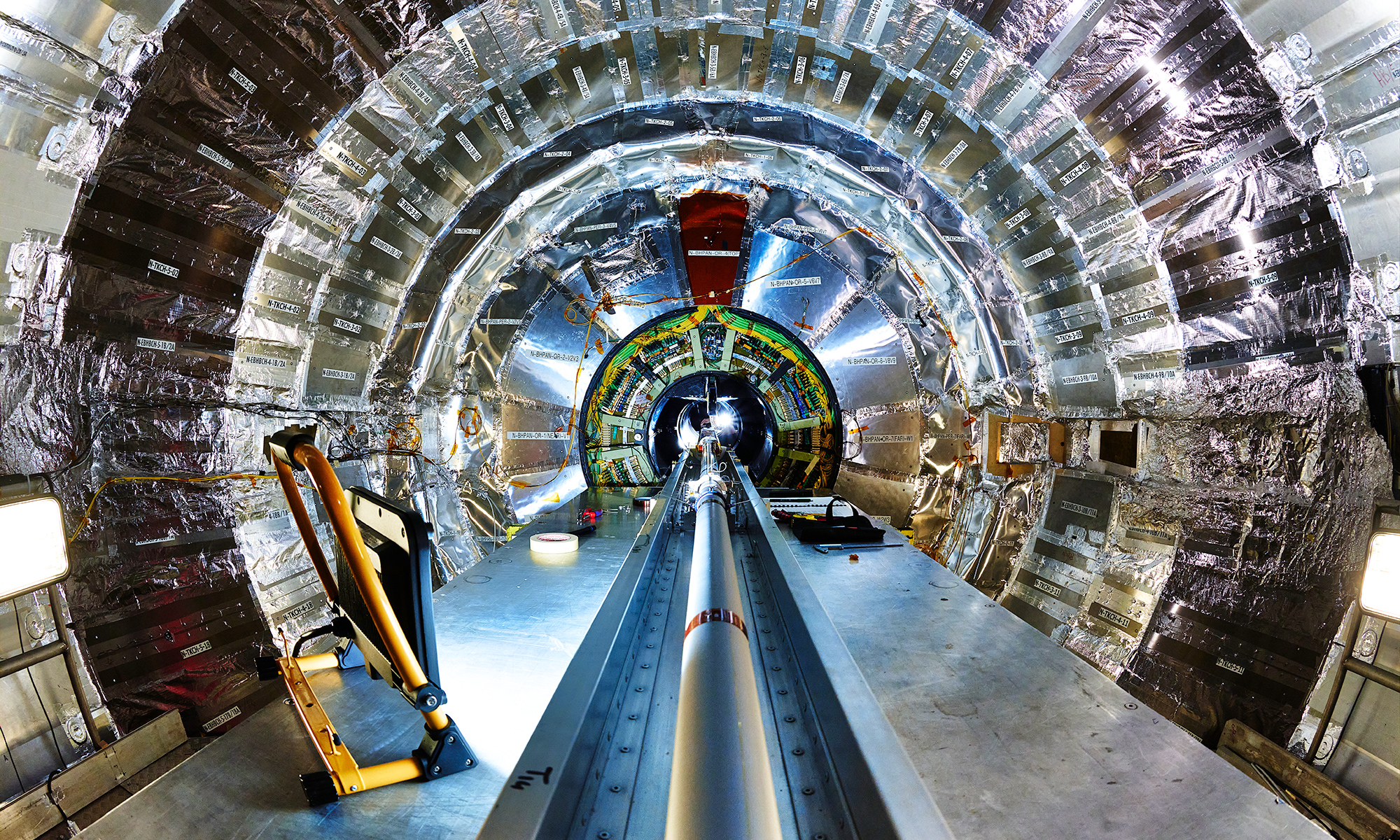The professor emerita, known as the ‘mother of infrared astronomy,’ had a profound impact on research into astronomical phenomena and the origins of the universe and was a pioneer for women in science.
Judith Pipher, a professor emerita of physics and astronomy who taught at the University of Rochester from 1971 to 2002, is being remembered by former colleagues, students, and collaborators for her leadership and contributions to the field of astronomy and for championing women in science. Pipher died on February 21 at the age of 81.
Pipher was inducted into the national Women’s Hall of Fame in 2007 for the exceptional advances she made in the study of astronomical objects by observing the infrared light they emit. Widely considered ‘the mother of infrared astronomy,’ she actively led her research group at Rochester until her death.
“Judy is considered the ‘mother of infrared astronomy’ in many senses of motherhood,” says Dan Watson, a professor of physics and astronomy at Rochester, who worked closely with Pipher on many projects. “She created technology that enabled the observations we can do today. She used the technology herself to create important contributions to several frontier areas of astrophysics. And through directly nurturing her close-by junior colleagues and serving as a beacon more widely, she has contributed mightily to the creation of two generations of astrophysicists.”
A native of Toronto, Ontario, Canada, Pipher earned her PhD from Cornell University in 1971, where her dissertation was one of the first in the newly emerging fields of submillimeter and infrared astronomy.
Judy Pipher, in her own words
Judy Pipher wrote an autobiographical post for Multiwave Astronomy, a collection of web-based lessons for high school students presented by practicing scientists or historical figures who significantly contributed to astronomical progress.
You can read more about her own account of her life here.
Later that year, she began her career at the University of Rochester. At the time, she was the only female faculty member in the physics department but said in an interview prior to her death that she felt “fully supported. Maybe I’m thick skinned, but I tend to ignore people who have behaved badly in any way.”
At Rochester, she directed the C.E.K. Mees Observatory—an astronomical observatory in Bristol, New York, that is owned and operated by the university—from 1979 to 1994, and she played a large role in revising undergraduate astronomy courses.
“All of Judy’s colleagues, faculty and staff, and her past students feel a great sense of loss with her passing,” says Steve Manly, professor and current chair of Rochester’s Department of Physics and Astronomy. “She was an active and vibrant member of our community for 50 years. Her legacy lives on in the young scientists she taught and inspired and the technology she helped develop that enabled the exploration of the universe through infrared wavelengths of light.”
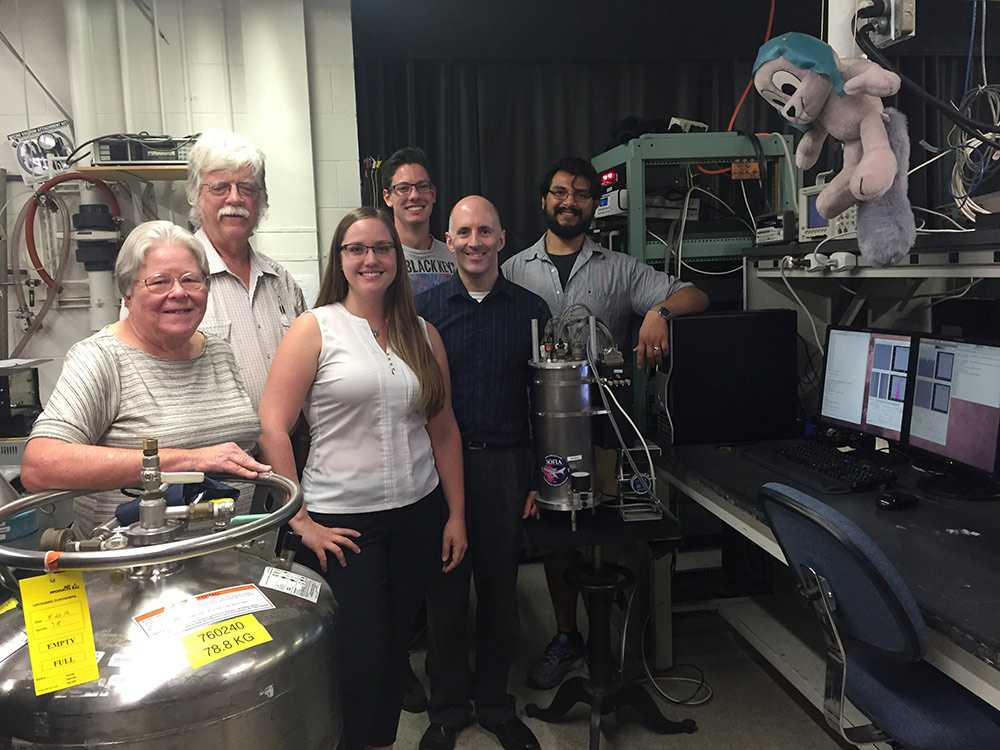
Pioneering images of faraway galaxies
During her time at Rochester, in addition to teaching, Pipher conducted research on galactic and extragalactic star formation and developed technologies for many groundbreaking projects in infrared astronomy, forming partnerships between academic and industrial research groups. In 1983, she was among the first astronomers from the United States to observe the skies with an infrared camera, which she used to capture images of starburst galaxies.
Along with her Rochester colleagues Bill Forrest and Dan Watson, she designed and tested infrared detectors for NASA projects including the Spitzer Space Telescope, which launched in 2003 and was retired in 2020. Spitzer was used to map obscured birthplaces of stars and planets in our galaxy and other galaxies, and the detectors developed by Pipher and her colleagues formed Spitzer’s electronic “eyes.”
“Judy’s research in astrophysics has always lay in areas in which technical challenges were presented,” wrote Watson and Arie Bodek, the George E. Pake Professor of Physics, in nominating Pipher for induction into the Women’s Hall of Fame. “It is difficult enough to design and build good instruments for making astronomical instruments and spectra with telescopes fixed to the ground that have no special environmental requirements. Judy has built instruments like that, too, but mostly has specialized in projects for which she had to make the detectors and optics herself, get them working at temperatures a few degrees above absolute zero, and do all of this at wavelengths at which the Earth’s atmosphere is opaque, so that telescope and instrument need to be borne by rockets, aircraft, or satellites.”
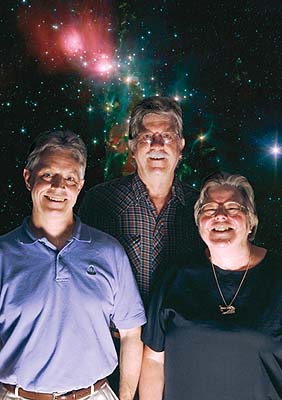
Most recently, Pipher developed and tested instrumentation for the Near-Earth Object (NEO) Surveyor (formerly known as NEOCam), a NASA project to discover, track, and characterize potentially hazardous asteroids and comets that come within Earth’s vicinity.
“Judy Pipher was a giant in the field of astronomy, and I’m so lucky to have been in her orbit,” says Amy Mainzer, a scientist at NASA’s Jet Propulsion Lab (JPL) and the principal investigator of NEO Surveyor. “Her work ushered in the era of large-format infrared detectors, resulting in thousands of amazing results on all kinds of topics, ranging from the formation of galaxies to the atmospheres of exoplanets.”
Mainzer met Pipher in the mid-1990s, when both were working on different aspects of the Spitzer Space Telescope. In 2004, Mainzer approached Pipher about adapting the detectors Pipher developed for Spitzer and using them for NEO Surveyor.
“The detectors Judy worked to mature will form the heart of the NEO Surveyor mission to discover potentially hazardous asteroids and comets when it launches,” Mainzer says.
In 2010, Mainzer, who is also a professor at the University of Arizona, discovered an asteroid that was assigned the generic name 2010 JP109. She felt it was fate that the asteroid was randomly assigned the same initials as Pipher, and she suggested to the International Astronomical Union that the asteroid be named in honor of a woman she considers “a tremendous mentor and dear friend.” The asteroid was later named “306128 Pipher.”
“Judy was one of only a tiny handful of women working in the then-new and very technical field of detector physics for astronomical instrumentation,” Mainzer says. “I leaned on her over the years for her wise advice, encouragement, and steadfast friendship. Judy’s impact—through her intellectual contributions and many students—will continue to be felt for generations. Judy’s electronic eyes have given us an incredible new perspective on the universe.”
Inspiring women in STEM
In 2002, Pipher retired from teaching—and was named a professor emeritus—in order to devote a larger fraction of her energies to research and the development of the next generation of infrared space observatories. That same year, she was awarded the university’s Susan B. Anthony Lifetime Achievement Award for her strong leadership qualities and exemplary model for women.
“Our department may be having more success than most in recruiting and retaining women, but the rate at which the women follow Judy indicates the large extent of her responsibility for this effect,” wrote Watson in a letter nominating Pipher for the award.
Pipher served in leadership positions in many organizations, including the International Astronomical Union, the Universities Space Research Association, NASA, and the American Astronomical Society, which established a program of fellows in 2020 and named Pipher one of 200 “legacy fellows” in their inaugural class.
Observing Judy Pipher’s namesake asteroid
Asteroids are rock formations left over from the formation of our solar system. Some asteroids are as small as flecks of dust, while others are hundreds of miles in diameter.
Judy Pipher’s namesake asteroid, 306128 Pipher, is nearly five kilometers (about three miles) across and orbits the sun in the main belt of asteroids between Mars and Jupiter. Its location, millions of miles from Earth, means it does not pose a threat to our planet.
Unfortunately, observers cannot just look up in the sky and see 306128 Pipher, although they can see the asteroid using a telescope. The updated coordinates—because the asteroid is constantly moving—are on NASA’s Jet Propulsion Laboratory website here.
Pipher was a prolific researcher, and director of her infrared research group, up until her death. On a shelf in her office in Rochester’s Department of Physics and Astronomy, she had a book titled Men of the Stars, which seemed peculiar reading material for a woman who pioneered the field of infrared astronomy, championed women in science, and has an asteroid named in her honor.
But, in an interview before her death, Pipher said she had never cracked open the book’s pages.
“I got that book at a garage sale,” Pipher said. “I saw it and took exception to it having only ‘men’ in the title. I knew I had to quickly buy it and take it away before somebody else found it and thought it would be appropriate reading material.”
In this manner, through her leadership as both a scientist and person, Pipher has profoundly inspired generations of females in STEM fields.
“Judy was instrumental in the field of infrared astronomical instrumentation, from molding its leaders to encouraging growth,” says Candice Fazar ’07 (PhD), now an associate professor of physics at Roberts Wesleyan College, who worked with Pipher on detector arrays designed for long-wavelength imaging. “I grew to love the field under Judy’s guidance, and it was Judy who really encouraged me to think bigger. She was a great role model, confident and accomplished, yet relaxed and easy going. She didn’t hesitate to think outside the box and encourage others to do so, for the sake of science. And, I will never forget the bumper sticker she had on her office door that stated, ‘It’s amazing what you can accomplish when you don’t care who gets the credit.’ Sums up Judy perfectly.”
“I started graduate school in 2012 specifically to work with Judy to test the long-wavelength cutoff ‘large-format’ infrared detectors that her infrared group had been developing for many years,” says Meghan Dorn ’19 (PhD), now an astronomy manager at Teledyne Imaging Sensors.
Dorn notes that Pipher was not only an excellent academic advisor but was also “like a second mother to me—offering her car if I needed a quick ride somewhere, hosting us for dinner at her lake house, and letting us stay at her house when there was a conference nearby. It is hard to capture what impact she had on me, because it is truly a fundamental part of my development as a person and a professional.”
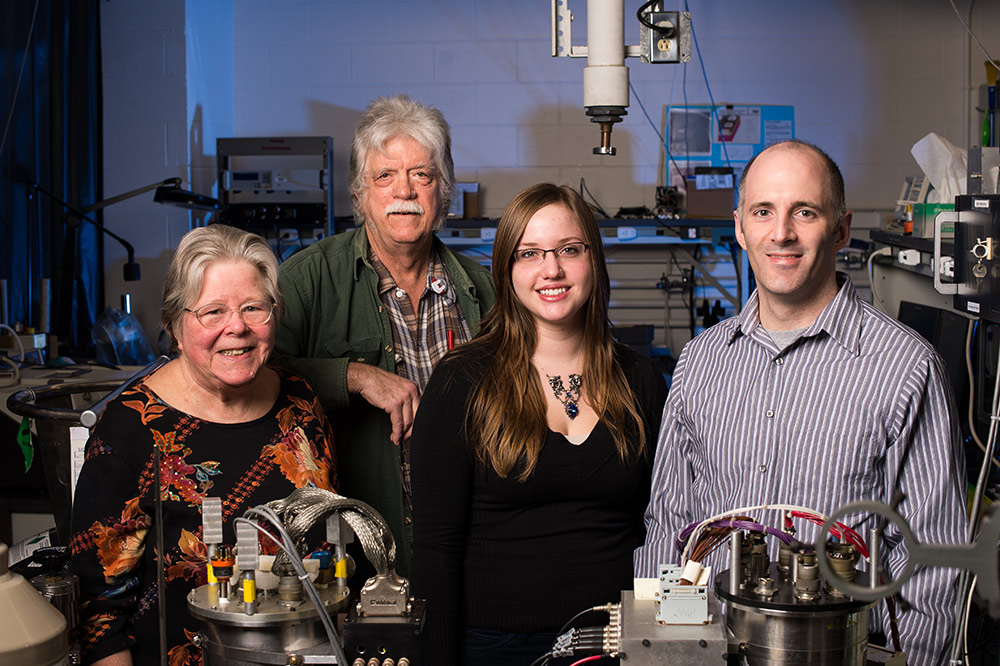
‘A force of nature’
Pipher’s colleague Bill Forrest reminisces about the ways in which Pipher was a cohesive force in Rochester’s Department of Physics and Astronomy, organizing bi-weekly luncheons and parties for astronomers on the solstices and equinoxes each year.
“These events were where others could learn what their colleagues were up to and were very much fun,” Forrest says. “Judy was a force of nature. She powered our astronomy group at the University of Rochester for very many years.”
As a resident of Seneca Falls on the shore of Cayuga Lake, Pipher was a board member on numerous community organizations, including the Cayuga Lake Watershed, which seeks to protect the lake and its tributaries. She and her late husband of 42 years, Bob, who died in 2007, were both lake enthusiasts. Together they built a 40-foot trimaran watercraft they named Cygnus, after the constellation that derives its name from the Latinized Greek word for swan. In 2020, the Town of Seneca Falls declared June 18, Pipher’s 80th birthday, to be “Dr. Judy Pipher Day.”
In addition to her profound legacy in physics and astronomy, Pipher leaves behind beloved family members including her sister and brother, four stepchildren, and several grandchildren and great grandchildren.
At gatherings, Watson says, Pipher enjoyed leading an “Astronomy Toast,” which descends from long ago and ascends from Pipher’s Scottish roots: “Here’s to ya/Few like ya/Damn few/And more’s the pity.”
Read more
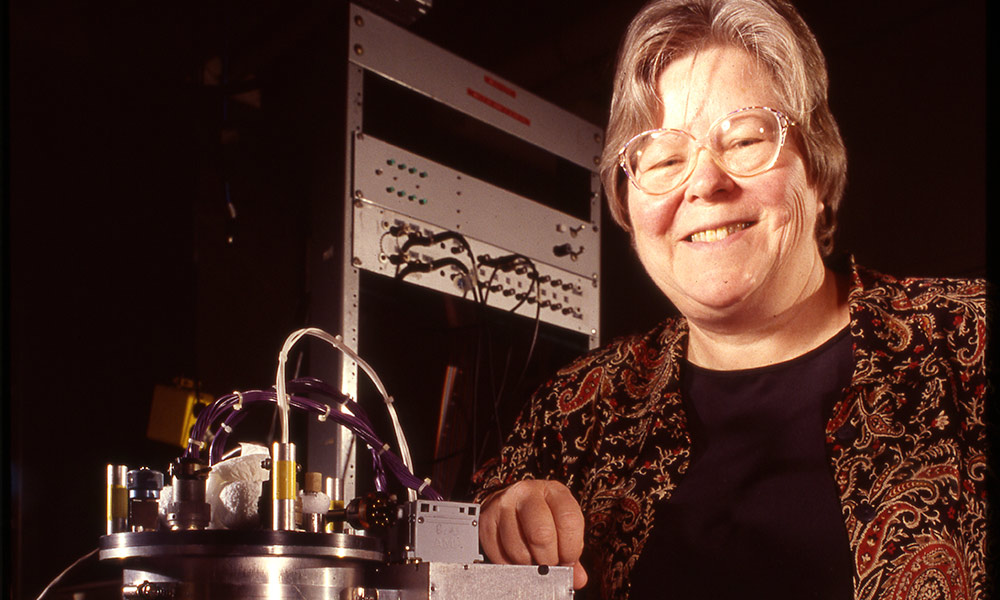
Judith Pipher named to National Women’s Hall of Fame
The professor of astronomy is one of three University of Rochester women inducted into the National Women’s Hall of Fame.
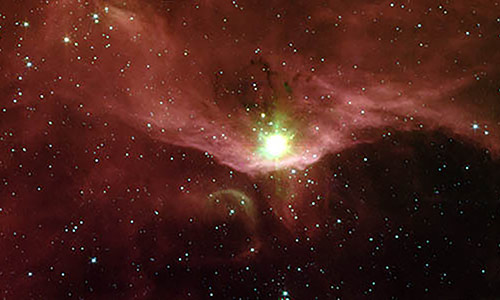
How nature builds a planet
A revolutionary NASA space telescope—designed in part by Rochester researchers—indicates we really had no idea what was going on out there.
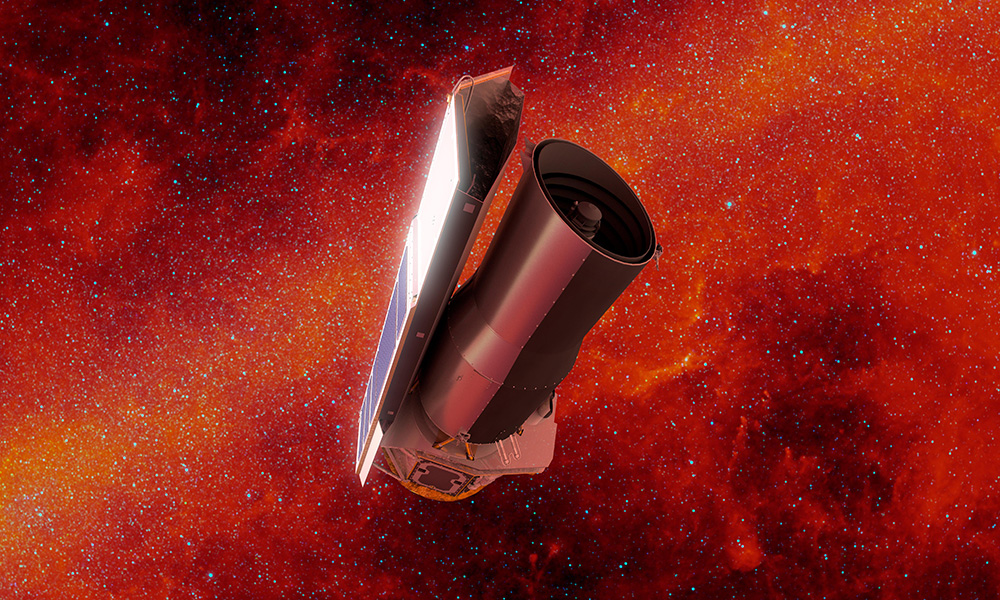
Rochester astronomers reflect on their contributions to Spitzer Space Telescope
As NASA retires its Spitzer Space Telescope, the Rochester scientists who were involved in its development, look back on the project.




